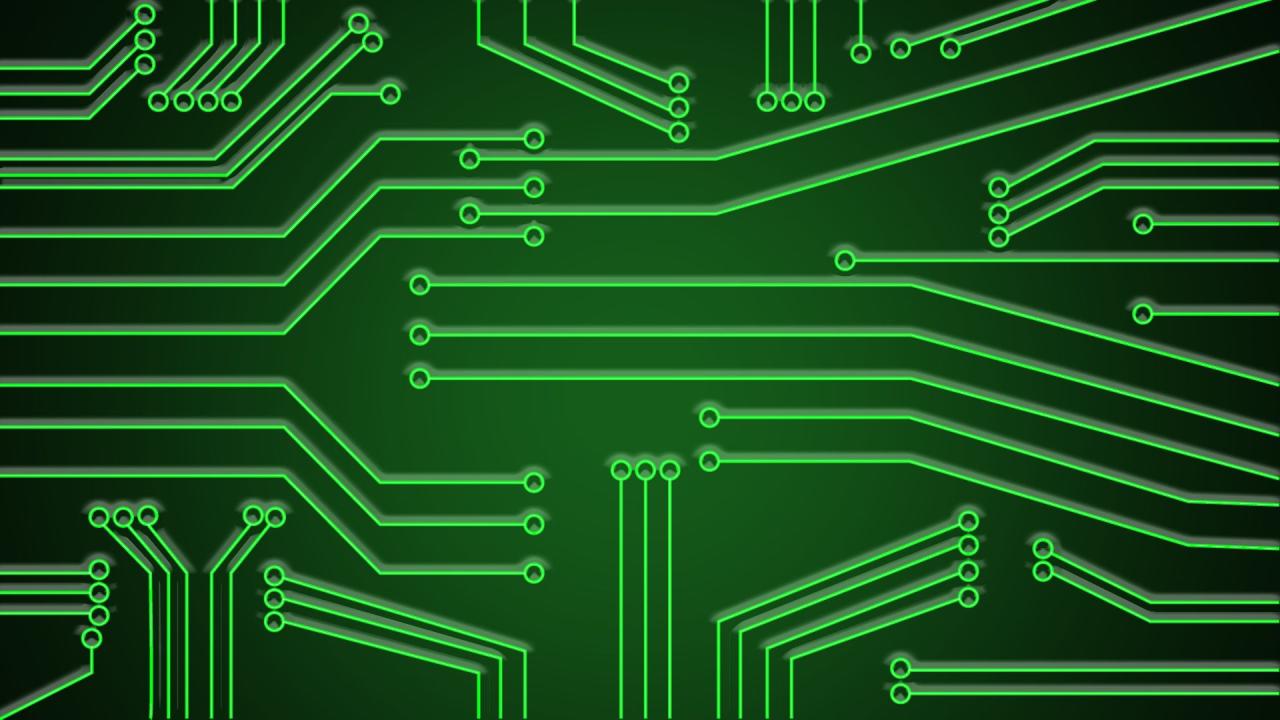Simpler Technology: A User-Friendly Future
Simpler technology is not just a trend, it’s a revolution. As technology becomes increasingly complex, there’s a growing demand for user-friendly solutions that prioritize accessibility and ease of use. This […]

Simpler technology is not just a trend, it’s a revolution. As technology becomes increasingly complex, there’s a growing demand for user-friendly solutions that prioritize accessibility and ease of use. This shift is driven by user frustration with complicated interfaces, concerns about accessibility, and a desire for intuitive experiences. The rise of simpler technology signifies a movement towards products and services that are designed to empower users, rather than intimidate them.
From intuitive mobile apps to streamlined web interfaces, simpler technology is already making its mark across various industries. It’s not about dumbing down technology, but rather about making it more accessible and engaging for everyone. By focusing on core functionalities and eliminating unnecessary complexity, simpler technology empowers users to achieve their goals with ease. This approach fosters a more inclusive and user-centric experience, leading to greater adoption and satisfaction.
The Appeal of Simpler Technology
In a world increasingly dominated by complex and feature-rich technology, there is a growing demand for simpler solutions. This shift towards simplicity is evident across various sectors, from consumer electronics to enterprise software. The desire for intuitive and user-friendly experiences is driving this trend, as users seek technology that seamlessly integrates into their lives without overwhelming them with unnecessary complexity.
Reasons for the Shift Towards Simpler Technology
The shift towards simpler technology is driven by a confluence of factors, including user frustration with complex interfaces, accessibility concerns, and the need for intuitive experiences.
- User Frustration with Complex Interfaces: Many users find themselves overwhelmed by the intricate interfaces of modern technology. This complexity can lead to frustration, confusion, and ultimately, a diminished user experience. For instance, the abundance of features and settings in smartphones can be daunting for some users, leading them to rely on a limited set of functions.
- Accessibility Concerns: As technology becomes increasingly pervasive, it is crucial to ensure that it is accessible to all users, regardless of their technical proficiency. Simpler technology caters to a wider audience, including individuals with disabilities or those who are new to technology. For example, the design of websites and mobile applications with clear typography, intuitive navigation, and alternative input methods can enhance accessibility and inclusivity.
- The Need for Intuitive Experiences: In today’s fast-paced world, users demand technology that is easy to use and understand. Simpler technology prioritizes intuitive design, reducing the learning curve and allowing users to focus on the task at hand. For instance, voice assistants like Amazon Alexa and Google Assistant have gained popularity due to their simple and natural interaction methods.
Defining “Simpler Technology”

In the realm of technology, there exists a spectrum ranging from intricate and complex systems to those that prioritize simplicity and ease of use. “Simpler technology” refers to the latter, encompassing technologies designed to be accessible, intuitive, and efficient, often focusing on fulfilling specific needs rather than boasting extensive features.
Key Characteristics of Simpler Technology
The defining characteristics of simpler technology are rooted in its core principles:
- Focus on Essential Functions: Simpler technology prioritizes delivering core functionalities effectively, avoiding unnecessary complexity and bloat. This approach often leads to more streamlined and efficient user experiences.
- Intuitive Design: Simpler technology emphasizes user-friendliness, prioritizing intuitive interfaces and straightforward interactions. This eliminates the need for extensive learning curves or complex manuals.
- Minimalist Approach: Simpler technology adopts a minimalist design philosophy, reducing the number of features, buttons, and options to minimize cognitive load and enhance clarity.
- Ease of Use: The primary objective of simpler technology is to make technology accessible to a wider audience, regardless of their technical expertise. This translates to a user experience that is easy to understand and navigate.
Simpler Technology vs. Traditional Approaches
Simpler technology contrasts with traditional approaches, which often prioritize feature-richness and advanced capabilities. This contrast presents both advantages and disadvantages:
Advantages of Simpler Technology
- Reduced Complexity: Simpler technology eliminates unnecessary complexity, resulting in a more straightforward and intuitive user experience.
- Improved Accessibility: By focusing on ease of use, simpler technology makes technology more accessible to a broader audience, including those with limited technical skills.
- Enhanced Efficiency: Simpler technology streamlines processes and reduces cognitive load, leading to increased efficiency and productivity.
- Lower Cost: Simpler technology often translates to lower development and maintenance costs, making it more cost-effective.
Disadvantages of Simpler Technology
- Limited Functionality: Simpler technology may lack the advanced features and capabilities found in more complex systems.
- Reduced Customization: The minimalist approach of simpler technology may limit customization options, potentially hindering users who require highly tailored experiences.
- Potential for Stagnation: Focusing solely on simplicity might hinder innovation and the development of more advanced features.
Design Principles for Simpler Technology
The pursuit of simplicity in technology is not merely a matter of aesthetics. It is a fundamental design philosophy that aims to make technology more accessible, intuitive, and efficient for users. To achieve this goal, designers must adhere to a set of key principles that guide the development of simpler technology. These principles serve as a roadmap, ensuring that technology is designed with the user in mind, prioritizing ease of use and understanding.
Principles of Simpler Technology
The principles of simpler technology are a framework for creating user-friendly and accessible interfaces. These principles guide designers in making technology more intuitive and efficient, ensuring that users can interact with technology without frustration or confusion.
- Clarity: The principle of clarity emphasizes the importance of clear and concise communication in technology. This means using simple language, avoiding jargon, and providing clear instructions.
- Description: Clear communication is crucial for users to understand how to use a product or service. It involves using straightforward language, avoiding technical terms, and providing unambiguous instructions.
- Practical Examples: Examples of clarity in design include using clear icons, well-organized menus, and concise error messages.
- Consistency: Consistency ensures that users can easily navigate and interact with different parts of a technology. This means maintaining a consistent layout, design elements, and terminology throughout the user interface.
- Description: Consistent design elements and terminology create a familiar and predictable experience for users, making it easier to learn and use the technology.
- Practical Examples: Consistent placement of buttons, menus, and icons across different screens or functions is a prime example of consistency in design.
- Efficiency: Efficiency focuses on minimizing the number of steps required to complete a task. This involves streamlining workflows, eliminating unnecessary features, and optimizing the user interface for speed and ease of use.
- Description: Efficient design aims to reduce user effort and time spent completing tasks. This involves streamlining workflows, removing unnecessary steps, and optimizing the interface for quick and intuitive interaction.
- Practical Examples: Examples of efficient design include using shortcuts, providing quick access to frequently used features, and minimizing the number of clicks required to complete a task.
- Feedback: Providing clear and timely feedback to users is essential for a positive user experience. This includes confirming actions, providing status updates, and offering error messages that are helpful and informative.
- Description: Providing clear and timely feedback to users is essential for a positive user experience. This includes confirming actions, providing status updates, and offering error messages that are helpful and informative.
- Practical Examples: Examples of feedback in design include progress bars, confirmation messages, and error messages that provide clear instructions on how to resolve the issue.
- Accessibility: Accessibility ensures that technology is usable by people with diverse abilities. This includes providing alternative input methods, adjustable text sizes, and high-contrast displays.
- Description: Accessibility aims to make technology usable by people with diverse abilities, including those with visual, auditory, or motor impairments.
- Practical Examples: Examples of accessibility in design include providing alternative input methods, adjustable text sizes, high-contrast displays, and screen readers.
Design Process for Simpler Technology
The design process for simpler technology is an iterative approach that prioritizes user feedback and testing. This process ensures that technology is developed with the user’s needs and preferences in mind, resulting in a more intuitive and efficient user experience.
The design process for simpler technology can be represented as a flowchart:
1. Define the Problem: Identify the specific problem or need that the technology aims to address.
2. Conduct User Research: Understand the needs, preferences, and abilities of the target users.
3. Develop Prototypes: Create early versions of the technology to test and refine concepts.
4. Gather User Feedback: Test prototypes with target users and gather feedback on usability and functionality.
5. Iterate and Improve: Based on user feedback, refine the design, functionality, and user interface.
6. Repeat Steps 4 and 5: Continue to iterate and improve the design based on user feedback until the technology meets the desired level of simplicity and usability.
7. Launch and Monitor: Launch the technology and monitor user behavior to identify areas for further improvement.
Impact of Simpler Technology on Different Industries
The pursuit of simplicity in technology holds immense potential to revolutionize various industries, from healthcare to entertainment. By simplifying complex processes, interfaces, and interactions, simpler technology can improve efficiency, accessibility, and user satisfaction across diverse sectors.
Healthcare
Simpler technology can significantly impact the healthcare industry by streamlining processes, improving patient engagement, and facilitating better access to care.
- Simplified Electronic Health Records (EHRs): EHRs are often cumbersome and difficult for healthcare providers to navigate. Simpler EHR systems with intuitive interfaces and streamlined data entry can improve efficiency and reduce errors.
- Telehealth Platforms: Simpler telehealth platforms with user-friendly interfaces can make remote consultations more accessible for patients, especially those in rural areas or with limited mobility.
- Wearable Health Devices: Wearable devices that collect and present health data in a clear and understandable manner can empower individuals to take better control of their well-being.
Education
Simpler technology can create more engaging and accessible learning experiences, promoting inclusivity and personalized learning.
- Interactive Learning Platforms: Educational platforms with simplified interfaces and gamified elements can enhance student engagement and make learning more enjoyable.
- Adaptive Learning Technologies: Simpler adaptive learning systems can tailor educational content to individual student needs, providing personalized learning paths and accelerating progress.
- Assistive Technologies: Simpler assistive technologies can help students with disabilities access educational resources and participate in learning activities more effectively.
Finance
Simpler financial technologies can empower individuals and businesses to manage their finances more effectively and access financial services more easily.
- Personal Finance Apps: Simplified personal finance apps with intuitive budgeting tools and clear financial insights can help individuals make better financial decisions.
- Digital Banking Platforms: Simpler digital banking platforms with streamlined online transactions and user-friendly interfaces can improve accessibility and convenience for customers.
- Microfinance Solutions: Simpler microfinance platforms can provide financial services to underserved populations, promoting economic inclusion and financial empowerment.
Entertainment
Simpler technology can enhance the entertainment experience by making it more accessible, interactive, and engaging.
- Streaming Services: Streaming services with simplified navigation and personalized recommendations can make it easier for users to discover and enjoy content.
- Virtual Reality (VR) and Augmented Reality (AR): Simpler VR and AR technologies can create immersive and interactive entertainment experiences that are accessible to a wider audience.
- Gaming Consoles and Games: Game consoles and games with simplified controls and intuitive interfaces can make gaming more accessible and enjoyable for a wider range of players.
The Future of Simpler Technology

The future of simpler technology holds immense promise, with advancements in artificial intelligence, user interface design, and hardware miniaturization paving the way for intuitive and accessible solutions. This shift towards simplicity is not just a design choice but a necessity, driven by the increasing complexity of the world around us.
Trends and Advancements
The future of simpler technology will be shaped by several key trends.
- AI-Powered Simplification: Artificial intelligence will play a crucial role in simplifying technology. AI-powered assistants and automation will handle complex tasks, making technology more accessible to a wider range of users. Imagine a world where your smart home seamlessly adapts to your needs, anticipating your preferences and making adjustments automatically.
- Intuitive User Interfaces: User interfaces will become increasingly intuitive and user-friendly, with a focus on natural language processing, gesture recognition, and voice control. Imagine interacting with your devices using natural language, just like you would with another person, eliminating the need for complex menus and settings.
- Miniaturization and Integration: Advances in hardware miniaturization will allow for the integration of multiple technologies into smaller and more portable devices. Imagine having a single device that functions as your smartphone, computer, and entertainment system, all in a compact and convenient form factor.
Potential Impact of Simpler Technology
The widespread adoption of simpler technology has the potential to significantly impact various industries.
| Trend | Description | Potential Impact |
|---|---|---|
| AI-Powered Simplification | AI-powered assistants and automation will handle complex tasks, making technology more accessible. | Increased productivity, improved accessibility, and reduced error rates in various industries. |
| Intuitive User Interfaces | User interfaces will become increasingly intuitive and user-friendly, with a focus on natural language processing, gesture recognition, and voice control. | Enhanced user experience, increased adoption rates, and new opportunities for product development. |
| Miniaturization and Integration | Advances in hardware miniaturization will allow for the integration of multiple technologies into smaller and more portable devices. | Increased portability, reduced costs, and new possibilities for mobile computing and communication. |
Challenges and Opportunities
The widespread adoption of simpler technology presents both challenges and opportunities.
- Accessibility and Inclusivity: Ensuring that simpler technology is accessible to all individuals, regardless of their technical skills or abilities, is crucial. This includes addressing issues related to language barriers, cognitive impairments, and physical limitations.
- Privacy and Security: As technology becomes more integrated into our lives, it is essential to address concerns about privacy and security. Implementing robust security measures and ensuring transparency in data collection and usage are crucial for building trust and fostering widespread adoption.
- Job Displacement: The automation of tasks by simpler technology could lead to job displacement in certain sectors. It is important to consider the social and economic implications of these changes and develop strategies for retraining and upskilling workers.
- Ethical Considerations: The development and deployment of simpler technology must be guided by ethical considerations. This includes ensuring fairness, transparency, and accountability in the design and use of AI-powered systems.
Last Point

The future of technology lies in simplicity. As technology evolves, the demand for user-friendly solutions will only grow. Simpler technology is not just a design trend, it’s a fundamental shift in how we interact with technology. By embracing simplicity, we can create a more accessible, inclusive, and engaging digital world for everyone. The journey towards simpler technology is not without its challenges, but the potential rewards are immense. As we continue to explore the possibilities of simpler technology, we can create a future where technology empowers, rather than overwhelms, us.
Sometimes, the most effective solutions are the simplest. This applies to technology as well, especially in the healthcare industry. By streamlining processes and simplifying workflows, businesses can optimize efficiency and provide better patient care. Business healthcare technology can help achieve this, enabling healthcare providers to focus on what matters most: patient well-being.
Ultimately, embracing simpler technology empowers healthcare professionals to deliver exceptional care in a more efficient and effective manner.









